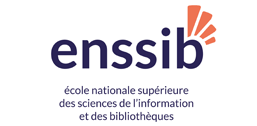Metapopulation epidemic models with heterogeneous mixing and travel behaviour
Abstract
Background: Determining the pandemic potential of an emerging infectious disease and how it depends on the various epidemic and population aspects is critical for the preparation of an adequate response aimed at its control. The complex interplay between population movements in space and non-homogeneous mixing patterns have so far hindered the fundamental understanding of the conditions for spatial invasion through a general theoretical framework. To address this issue, we present an analytical modelling approach taking into account such interplay under general conditions of mobility and interactions, in the simplifying assumption of two population classes.
Methods: We describe a spatially structured population with non-homogeneous mixing and travel behaviour through a multi-host stochastic epidemic metapopulation model. Different population partitions, mixing patterns and mobility structures are considered, along with a specific application for the study of the role of age partition in the early spread of the 2009 H1N1 pandemic influenza.
Results: We provide a complete mathematical formulation of the model and derive a semi-analytical expression of the threshold condition for global invasion of an emerging infectious disease in the metapopulation system. A rich solution space is found that depends on the social partition of the population, the pattern of contacts across groups and their relative social activity, the travel attitude of each class, and the topological and traffic features of the mobility network. Reducing the activity of the less social group and reducing the cross-group mixing are predicted to be the most efficient strategies for controlling the pandemic potential in the case the less active group constitutes the majority of travellers. If instead traveling is dominated by the more social class, our model predicts the existence of an optimal across-groups mixing that maximises the pandemic potential of the disease, whereas the impact of variations in the activity of each group is less important.
Conclusions: The proposed modelling approach introduces a theoretical framework for the study of infectious diseases spread in a population with two layers of heterogeneity relevant for the local transmission and the spatial propagation of the disease. It can be used for pandemic preparedness studies to identify adequate interventions and quantitatively estimate the corresponding required effort, as well as in an emerging epidemic situation to assess the pandemic potential of the pathogen from population and early outbreak data.










